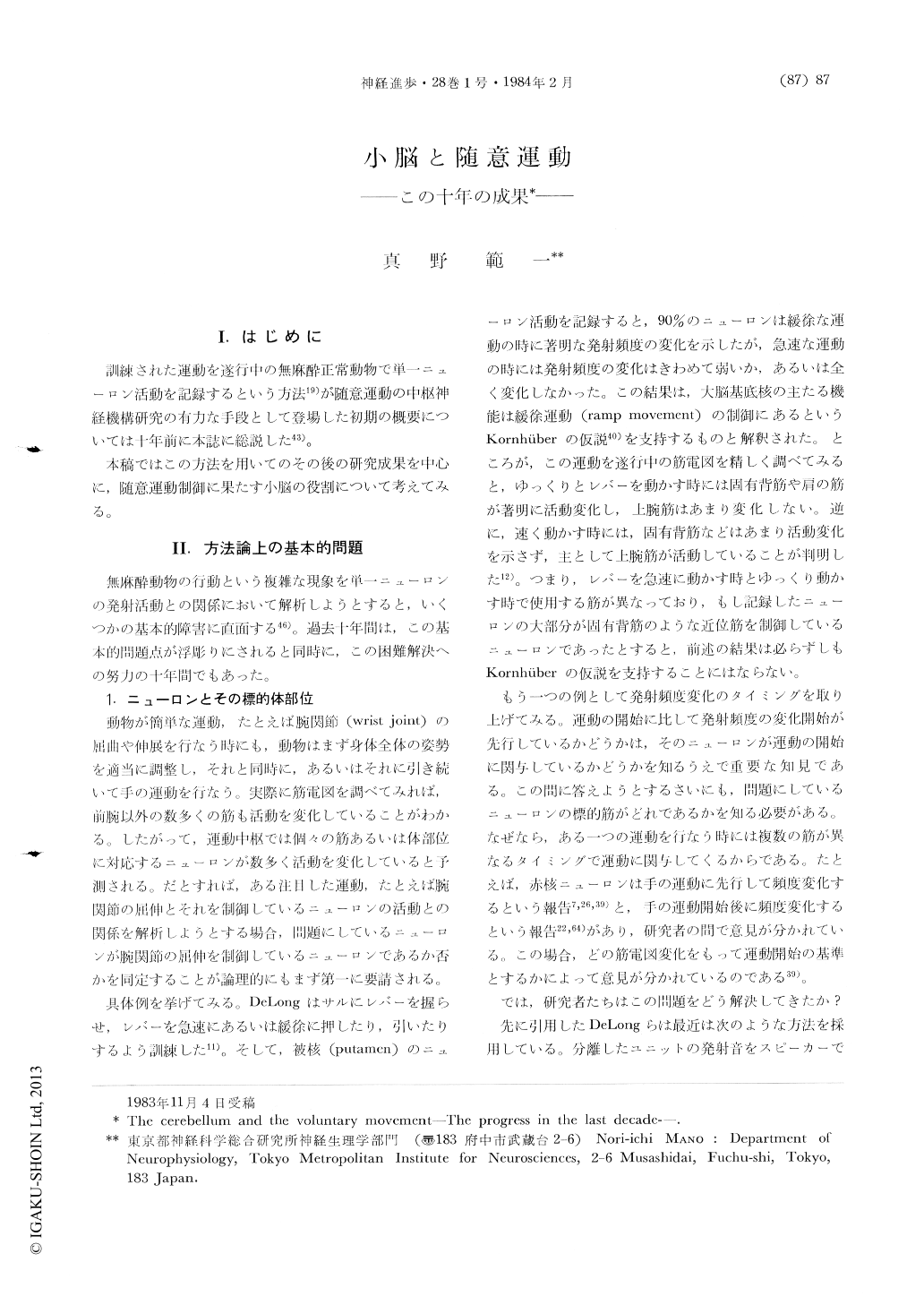Japanese
English
特集 随意運動のメカニズム
小脳と随意運動—この十年の成果
The cerebellum and the voluntary movement: The progress in the last decade
真野 範一
1
Noriichi Mano
1
1東京都神経科学総合研究所神経生理学部門
1Department of Neurophysiology, Tokyo Metropolitan Institute for Neurosciences
pp.87-102
発行日 1984年2月10日
Published Date 1984/2/10
DOI https://doi.org/10.11477/mf.1431905575
- 有料閲覧
- Abstract 文献概要
- 1ページ目 Look Inside
I.はじめに
訓練された運動を遂行中の無麻酔正常動物で単一ニューロン活動を記録するという方法19)が随意運動の中枢神経機構研究の有力な手段として登場した初期の概要については十年前に本誌に総説した43)。
本稿ではこの方法を用いてのその後の研究成果を中心に,随意運動制御に果たす小脳の役割について考えてみる。
Abstract
This article overviewed the advances in the last decade of our knowledge on the neural activity of the cerebellum during the voluntary limb movement.
I. It is required for single cell studies of voluntary movement in behaving animal to solve the following two basic problems. First:the identification of target muscle or body part controlled by a neuron under the study. Second: the definition of a limb movement to be studied. The development of the methods in solving theseproblems was reviewed.

Copyright © 1984, Igaku-Shoin Ltd. All rights reserved.


